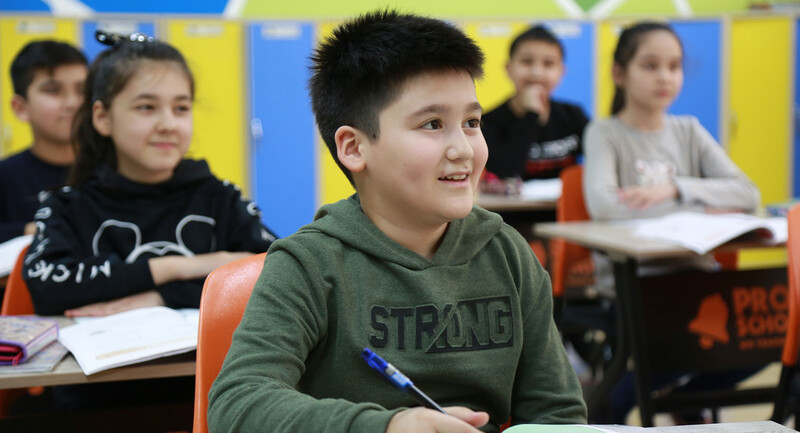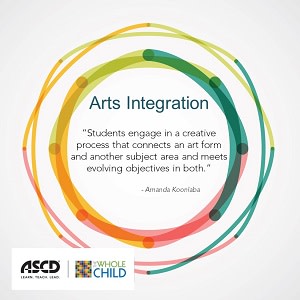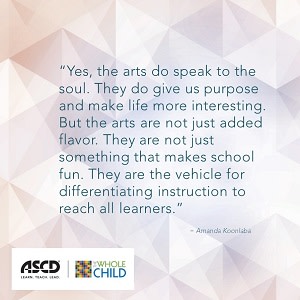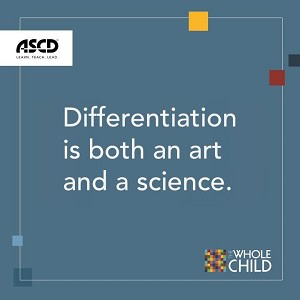I first encountered the complexities around curriculum planning five years ago as a middle school Spanish teacher in California. A colleague and I had to outline a scope and sequence for our K–8 program and establish a curriculum that emphasized student communication and cultural acquisition. Most of our chats involved questioning each other on how to prepare students to apply cultural knowledge in different situations.
How can we make learning impactful so that it endures? Can learning Spanish aid a student’s progress in science, literacy, or even math? If so, how?
We found the answer: deep learning.
Educators have such wide interpretations of deep learning that the concept can feel confusing. On one hand, according to ASCD authors Jay McTighe and Harvey Silver, some educators believe deep learning entails the development or acquisition of content knowledge, while others believe deep learning comes from process skills like critical thinking, creativity, and communication.
McTighe and Silver have another view: Both groups have a point—students need prior content knowledge as well as process skills to learn deeply—but students also need to be able to understand to make sense of ideas so that transfer to new contexts can occur.
Focus on the Big Picture Ideas
The more my colleague and I thought about how we would develop our curriculum, the more we ran into roadblocks. We thought about all the Spanish content we had to cover by the time our students graduated—knowing the present tense, past tense, imperfect, and to do it all with fun—the task seemed daunting.
To make matters worse, we wanted to integrate not only culture from Spain but introduce food, customs, and celebrations from all over Latin America.
Thinking back, we finally overcame this curriculum development obstacle by shifting our focus from covering more content to seeking specific big-picture learning targets. As McTighe and Silver recommend in their article “Instructional Shifts to Support Deep Learning,” rather than trying to cram content, we began to focus on uncovering the big ideas within the content.
So instead of driving our curriculum with questions and goals framed around grammar and speaking targets, we considered what our students could relate to: We assigned each grade level to learn about a specific country—say, Mexico in the 6th grade—and then divided the Mexico curriculum into themes (studying Mexican myths and legends in October, family relations in December, and Mexican weather patterns in January, for example).
We knew that if we focused on covering themes and ideas, we could weave the grammar into the activities naturally. Students would also be encouraged to speak more if they were passionate about what they were learning. To help educators brainstorm big ideas rather than facts for curriculum development, McTighe recommends framing these big ideas into questions that students will have to ponder.
For our Spanish curriculum, we developed real-world open-ended inquiries like, “How would you plan a vacation to Mexico in the summer?”
In the end, we found it much easier to plan a curriculum around exciting themes and questions than trying to hit countless content targets. We stopped focusing on hammering targets our students did not want to learn and instead tricked them into learning grammar by being passionate about thematic content. We saw an uptick in student participation and scores.
Students on the Stage
Wherever possible, my colleague and I planned to step away from lessons and have our themes guide learning.
My proudest moments as a teacher did not come from any actual teaching. In fact, I disliked having to stand at the front of the classroom lecturing students.
The magical moments came from catching a student calling up a strategy to work out a problem in a new way, or witnessing students working collaboratively to achieve something great.
If the lesson involved planning a vacation to Mexico, we made sure to allow students ample time to investigate and compare on their own without direct teacher instruction.
McTighe and Silver identify seven thinking skills to help students independently process curriculum content for deeper learning, with the teacher serving only as the “guide on the side”:
- Conceptualizing (or, developing an understanding of abstract concepts).
- Note-making and summarizing.
- Comparing.
- Reading for understanding (or, going beyond the literal meaning).
- Predicting and hypothesizing.
- Visualizing and graphic representation.
- Perspective taking and empathizing.
There are many ways to promote these skills. Silver and McTighe address over 30 ways to do so in Teaching for Deeper Learning: Tools to Engage Students in Meaning Making (ASCD, 2020).
A New Way
Teaching our students to learn deeply should not be something we plan once and later drop. It takes effort to change the way instruction is planned, but the effort pays off. And, as McTighe, Perini, and Silver point out in their article “3 Strategies for Deep Virtual Learning,” there are even ways to encourage deep learning in a virtual and hybrid environment.
Meet Jay McTighe!
On November 19 and December 6, 2021, Jay McTighe will be guiding a series of ASCD Author Workshops on deep learning. These virtual master classes are designed for interactive learning on topics that matter most to educators.








